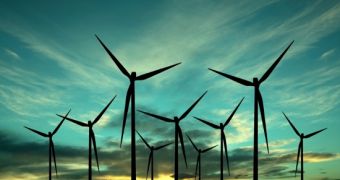In a recent report, the World Wildlife Fund says that, should it choose to do so, India could green up its ways to such an extent that, by the year 2050, it would run almost entirely on renewable energy sources.
In its report, the organization details that India could switch to having nearly 100% of its energy demand met by green sources by mid-century despite the fact that, for the time being, its grid is chiefly provided for by coal-fired power plants.
Besides, it could make this transition in spite of the fact that, according to several estimates, it will experience a whopping growth in terms of electricity consumption in the years to come.
Renew Economy details that, in its report, the green group pieces together and compares two possibilities for the country's evolution, i.e. a so-called renewable energy scenario (REN, for short) and a reference scenario (REF).
The former boils down to India's beginning to intensely harvest green energy sources, whereas the latter refers to its relying heavily on fossil fuels such as coal, oil, and gas, the same source details.
The organization's REN indicates that, at least in theory, it is possible for the country to have renewables make up for roughly 90% of its energy mix by mid-century.
According to the World Wildlife Fund, solar and wind would be king and queen of green energy in India.
Thus, concentrated solar thermal technologies have the potential to both meet a considerable chunk of the country's electricity and thermal demands.
The organization also predicts that, by the year 2050, India could install 170 gigawatts of offshore wind power, and that hydro, tidal and geothermal schemes could be greatly expanded too.
“However, there are still many unresolved questions in the REN scenario related to resource potentials, availability, commercial viability of alternative options, policy and finance mobilization, barriers of cultural and technological lock-ins, etc,” the World Wildlife Fund nonetheless writes in its report.
Furthermore, “Several feasibility studies are, therefore, needed to lay the basis for moving toward the REN scenario; these have not yet been carried out. There are many interventions that would be necessary to remove various barriers and to achieve higher levels of renewable energy deployment in India.”
Interestingly enough, the organization predicts that, should India move forward with REN rather than with REF, it would end up having about 25% more electrical generation capacity.
Besides, its carbon emissions would stop at 1 billion tonnes rather than up to the 12 billion tonnes associated with REF.

 14 DAY TRIAL //
14 DAY TRIAL //